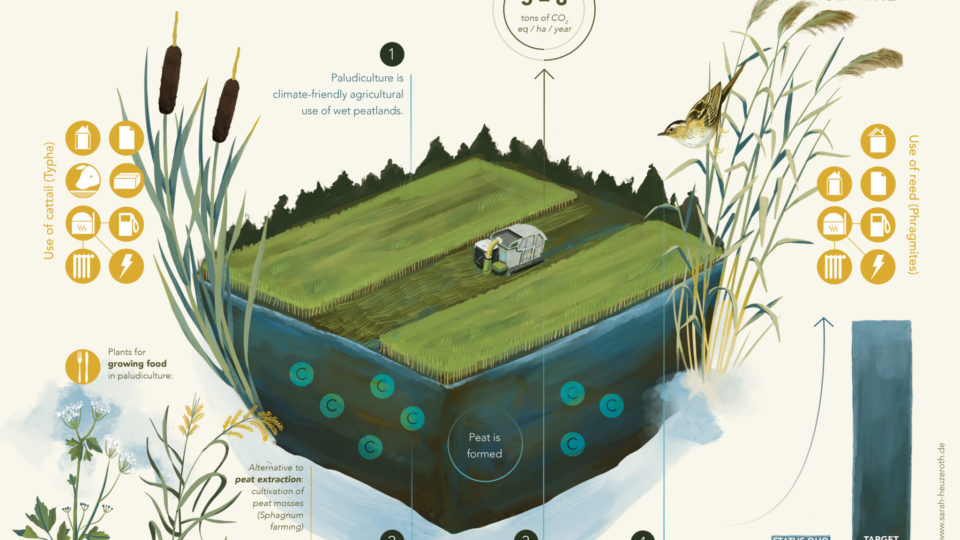Drainage-based agriculture on peatland causes enormous economic and environmental losses through CO2 emissions (~25 % of EU agricultural emissions from 3 % of EU agricultural land), loss of biodiversity, water pollution, soil degradation, and subsidence followed by an eventual loss of productive land.
Rewetting (i.e. raising the water level near to surface) is essential to minimize emissions and peat degradation, but also impedes drainage-based land use. Paludiculture has been recognized as “agricultural activity” and “eligible hectares” in the amendments to the CAP legislative text (Art. 4 §1) approved by the European Parliament1 and Council, now under negotiation in the trilogue. CAP direct payments, together with a clear understanding of the term “paludiculture” are the key prerequisite to enable farmers to take up (re)-wetted productive peatland use (Paludiculture).
Definition
Paludiculture is the productive land use of wet and rewetted peatlands that preserves the peat soil and thereby minimizes CO2 emissions and subsidence
Carbon farming and co-benefits
With paludiculture, peatlands are kept productive under permanently wet, peat-conserving and potentially peat-forming conditions. Thus, it is a blueprint for peatland carbon farming while still producing food, feed and energy. Co-benefits of paludiculture could contribute to the objectives of EU Green Deal policy by maintenance and restoration of multiple ecosystem services such as water buffering, nutrient retention, local climate cooling and habitat provision for rare species, while allowing agricultural production simultaneously.
Paludicultural plants and utilisation options
Paludiculture comprises various agricultural production systems that target the production of plant- or animal-based commodities – from harvesting vegetation on semi-natural sites to establishing specific permanent crops.
Paludiculture uses above ground biomass, while below ground biomass, i.e. a major part of the net primary production, remains for peat formation. After establishing high water tables near the soil surface throughout the year, wet grasslands may develop by succession of vegetation or permanent crops with specific peatland species can be cultivated. The harvested biomass can be used as food, feed, fibres for industrial biochemistry, for production of construction materials, high quality liquid or gaseous biofuels, for heat production through direct combustion or for further purposes such as extracting and synthesizing pharmaceuticals and cosmetics. These diverse options for biomass from paludiculture show its great potential for future circular bio-economy applications.
Find below the policy briefing and a list of paludicultural plants

PolicyCAp-Final.pdf
download
List-of-paludicultural-plants-and-utilisation-options_19-10-2019.pdf
downloadBackground info related to CAP

